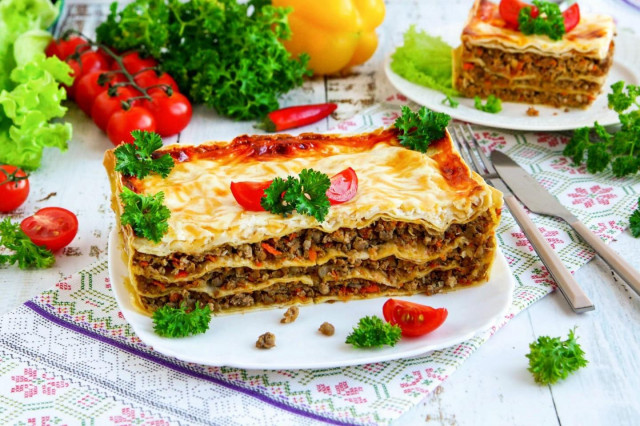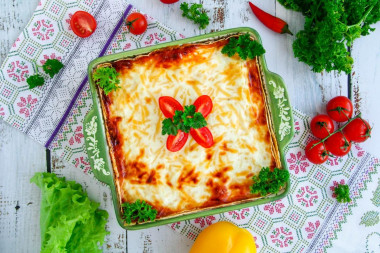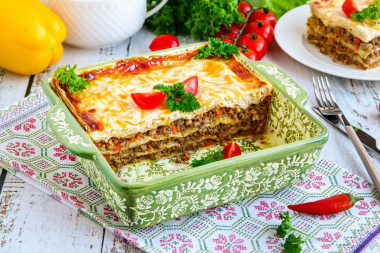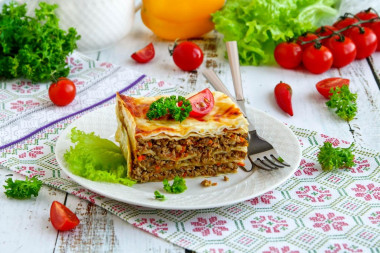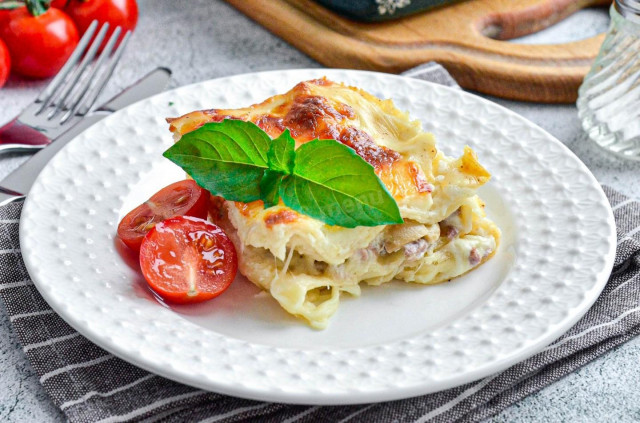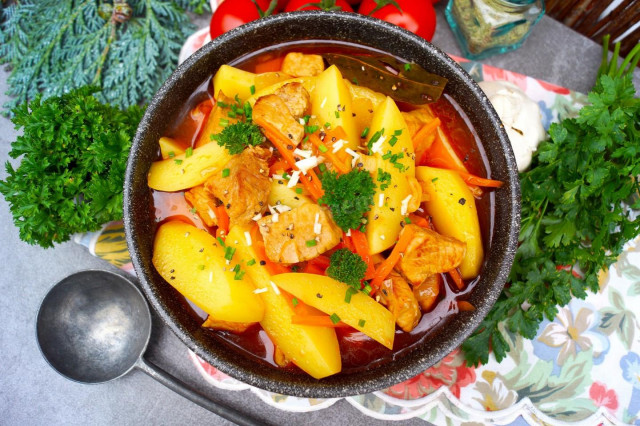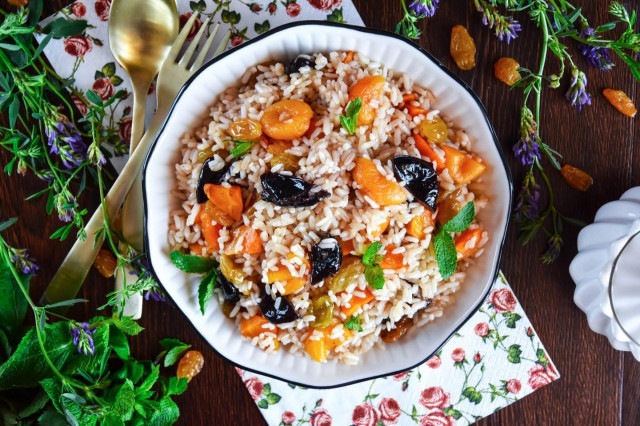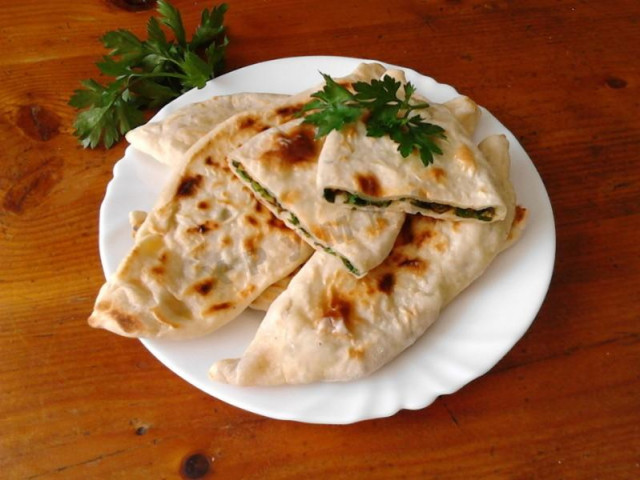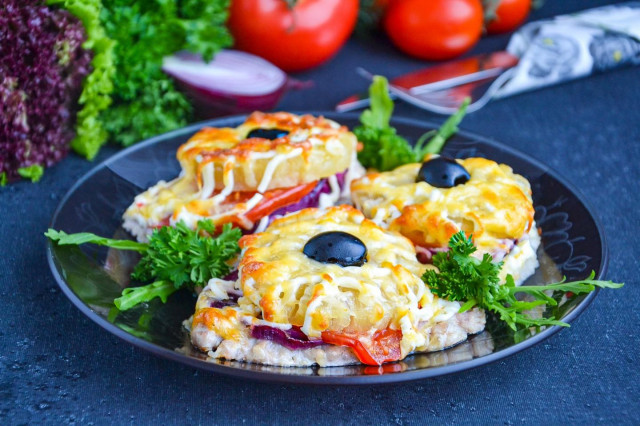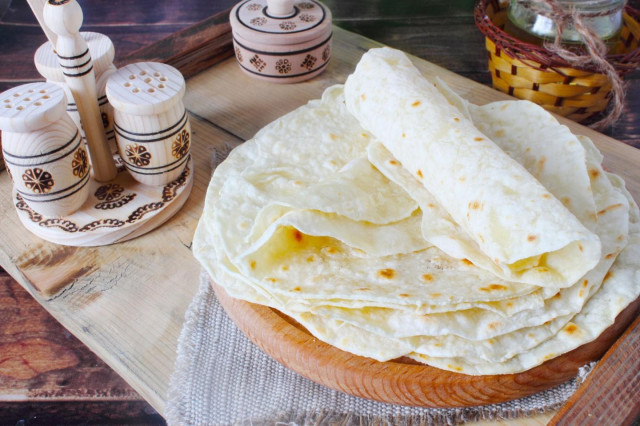Composition / ingredients
Step-by-step cooking
Step 1:
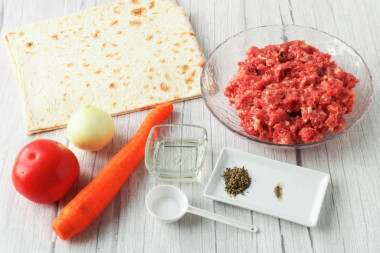
How to make a pita bread casserole in the oven? Prepare the necessary products. You can take absolutely any minced meat. I have mixed (pork, beef). Choose a large tomato. If the tomatoes are small, take two.
Step 2:
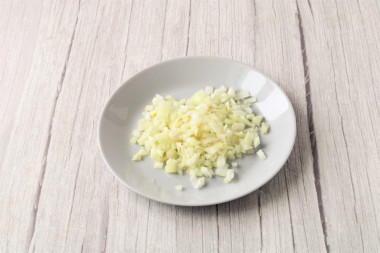
Pre-peeled onion cut into small cubes.
Step 3:
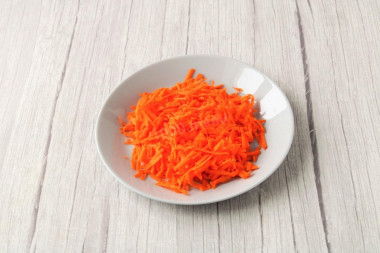
Peel and wash the carrots. Grate the carrots on a coarse grater.
Step 4:
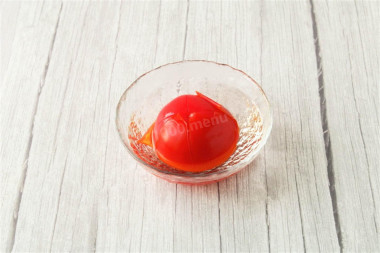
How easy is it to peel tomatoes? Wash them, make criss-cross incisions on top with a sharp knife. Put it in boiling water for 1-2 minutes so that the skin bursts. Remove, cool slightly and remove the skin.
Step 5:
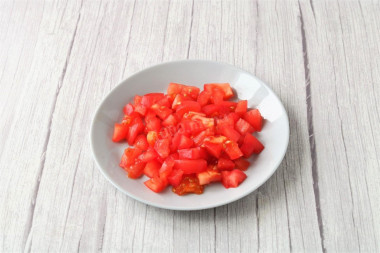
Cut the tomato into small cubes. You can use an immersion blender and make tomato puree.
Step 6:
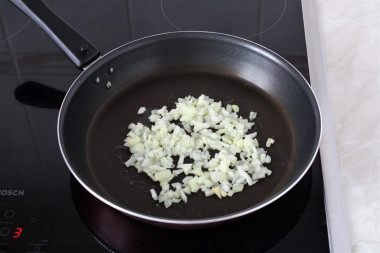
Heat the vegetable oil in a frying pan, put the chopped onion. Fry the onion over medium heat, stirring, for 3-4 minutes.
Step 7:
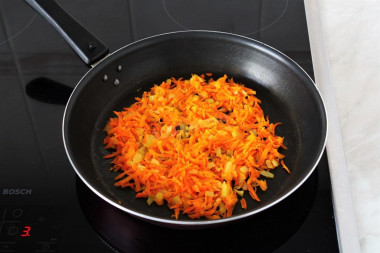
Add grated carrots to the onion in the pan, mix. Cook the vegetables, stirring occasionally, until half-cooked.
Step 8:
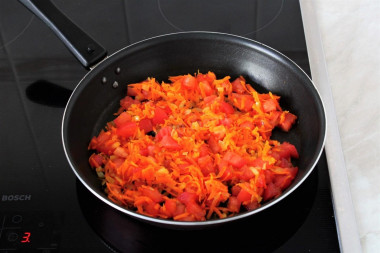
Add tomatoes to the vegetables, mix. Fry the vegetables until the tomato juice has completely evaporated.
Step 9:
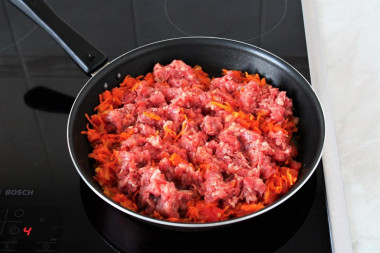
Add the minced meat to the vegetables and mix immediately. Mash the minced meat so that large lumps do not form.
Step 10:
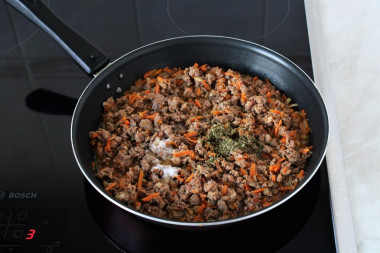
Fry the minced meat over moderate heat until the color changes. In the process of cooking, add salt to the minced meat with vegetables, add ground black pepper and Provencal herbs, mix. Fry the minced meat until tender. Cool the filling a little.
Step 11:
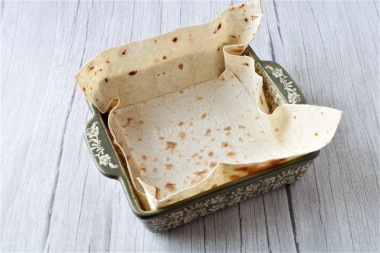
Cover the baking dish with a sheet of pita bread, cutting it to the desired size if necessary. Lavash should completely cover the bottom and walls of the mold. I covered the bottom with two layers of lavash. I have a uniform size of 18 *18 cm.
Step 12:
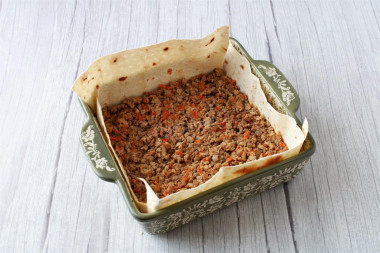
To make the shape of the casserole more neat, I cut the pita bread a little in the corners. Visually divide the filling into three parts. Spread evenly one part on a layer of pita bread.
Step 13:
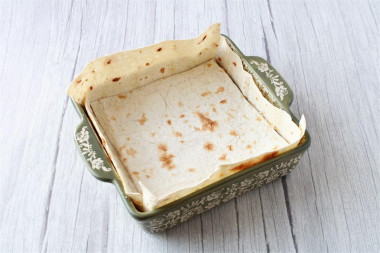
Put a double layer of pita bread on top again. Repeat the alternation of layers until the filling is finished. There should be a double layer of pita bread on top of the casserole.
Step 14:
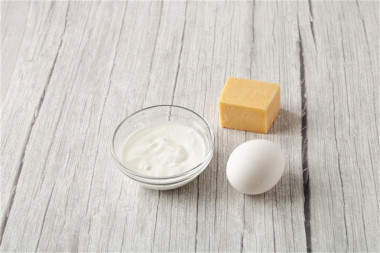
Sour cream of any fat content is suitable for filling. Cheese can be taken solid, semi-solid or melted.
Step 15:
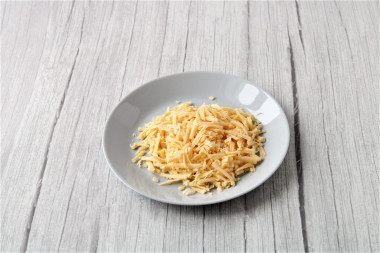
Chop the cheese on a coarse grater.
Step 16:
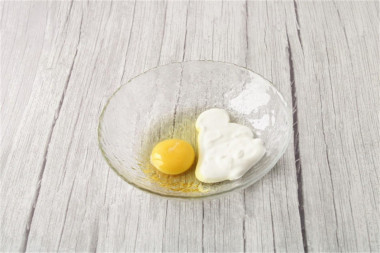
Combine the egg with sour cream, whisk with a fork until smooth.
Step 17:
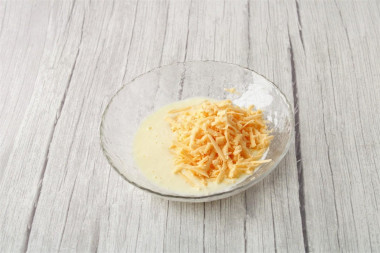
Add grated cheese, mix.
Step 18:
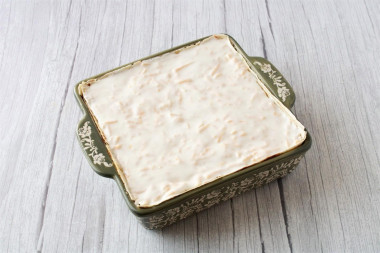
Pour the egg-sour cream mixture over the top of the casserole.
Step 19:
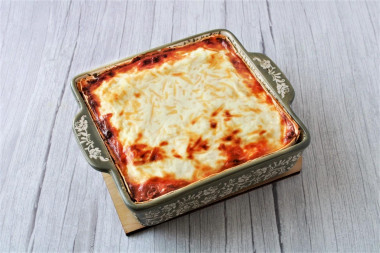
Put the mold in a preheated oven to 190C for about 20 minutes. The filling should seize and be covered with a ruddy crust. Determine the cooking time, focusing on the features of your oven.
Step 20:
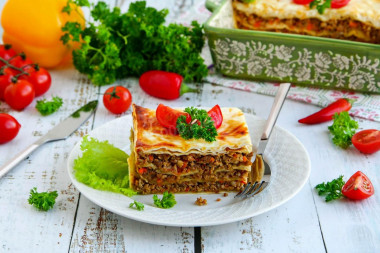
Serve the pita bread casserole hot. Enjoy your meal!
Any oils are useful only until a certain temperature is reached - the point of smoking, at which the oil begins to burn and toxic substances, including carcinogens, are formed in it. How to determine the roasting temperature and choose the best oil for frying, and which is better not to use at all, read here .
Keep in mind that everyone's ovens are different. The temperature and cooking time may differ from those specified in the recipe. To make any baked dish successful, use useful information about the features of ovens !
In order for the oven to have time to heat up to the desired temperature, turn it on in advance (10-20 minutes before the start of cooking).
Calorie content of the products possible in the dish
- Tomatoes - 23 kcal/100g
- Sour cream of 30% fat content - 340 kcal/100g
- Sour cream of 25 % fat content - 284 kcal/100g
- Sour cream with 20 % fat content - 210 kcal/100g
- Sour cream of 10% fat content - 115 kcal/100g
- Sour cream - 210 kcal/100g
- Chicken egg - 157 kcal/100g
- Egg white - 45 kcal/100g
- Egg powder - 542 kcal/100g
- Egg yolk - 352 kcal/100g
- Ostrich egg - 118 kcal/100g
- Carrots - 33 kcal/100g
- Dried carrots - 275 kcal/100g
- Boiled carrots - 25 kcal/100g
- Dutch cheese - 352 kcal/100g
- Swiss cheese - 335 kcal/100g
- Russian cheese - 366 kcal/100g
- Kostroma cheese - 345 kcal/100g
- Yaroslavsky cheese - 361 kcal/100g
- Altai cheese 50% fat content - 356 kcal/100g
- Soviet cheese - 400 kcal/100g
- Cheese "steppe" - 362 kcal/100g
- Uglich cheese - 347 kcal/100g
- Poshekhonsky cheese - 350 kcal/100g
- Lambert cheese - 377 kcal/100g
- Appnzeller cheese with 50% fat content - 400 kcal/100g
- Chester cheese with 50% fat content - 363 kcal/100g
- Edamer cheese with 40% fat content - 340 kcal/100g
- Cheese with mushrooms of 50 % fat content - 395 kcal/100g
- Emmental cheese with 45% fat content - 420 kcal/100g
- Gouda cheese with 45% fat content - 356 kcal/100g
- Aiadeus cheese - 364 kcal/100g
- Dom blanc cheese (semi-hard) - 360 kcal/100g
- Lo spalmino cheese - 61 kcal/100g
- Cheese "etorki" (sheep, hard) - 401 kcal/100g
- White cheese - 100 kcal/100g
- Fat yellow cheese - 260 kcal/100g
- Altai cheese - 355 kcal/100g
- Kaunas cheese - 355 kcal/100g
- Latvian cheese - 316 kcal/100g
- Limburger cheese - 327 kcal/100g
- Lithuanian cheese - 250 kcal/100g
- Lake cheese - 350 kcal/100g
- Gruyere cheese - 396 kcal/100g
- Ground black pepper - 255 kcal/100g
- Mixed minced meat - 351 kcal/100g
- Vegetable oil - 873 kcal/100g
- Armenian lavash - 236 kcal/100g
- Lavash - 277 kcal/100g
- Salt - 0 kcal/100g
- Onion - 41 kcal/100g
- Herb Mixture - 259 kcal/100g

